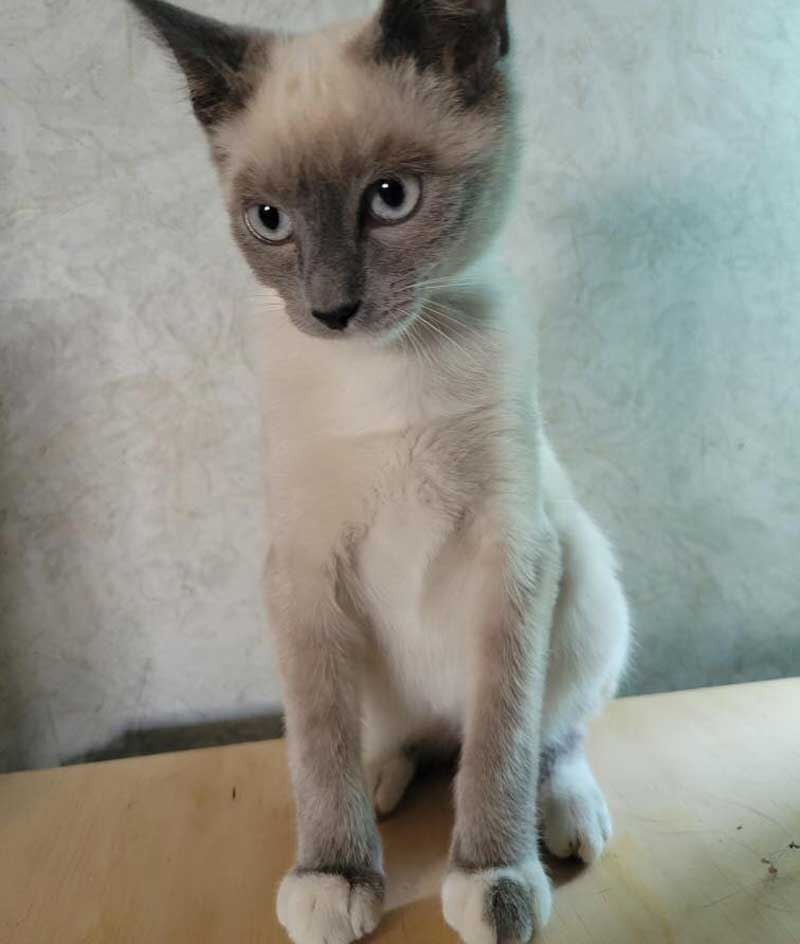FAQs
Answers to your top cat questions!
Why do cats purr?
The audible vibration that we love so much, purring, is a bit of a mystery still, but most research shows that it is a result of the larynx (voice box) and diaphragm (main muscle used for breathing) working together via signals from a cat’s brain. It is thought to originate as a soothing sound from the queen (mother) cat to her kittens. However, cats will continue to purr in life when they are feeling affectionate or loved. Some will purr to soothe themselves when asleep, injured, sick, or even nervous. Just like each cat is an individual, each cat has its own characteristic purr.
We do know that purring is an intentional thing that cats, even wild ones, do on purrrrose. So when your sweet furry friend rubs against your leg or hand or jumps in your lap, you should be flattered and charmed–and reciprocate with their favorite forms of affection that you know they love.
What are whiskers for?
Cats have about 12 whiskers, or vibrissae, on each side of their face. They are thicker than normal hairs and contain a blood and nerve supply. They are very important! Cat use their whiskers to tell their position in space and what is going on around them. They sense air currents and provide information on the cat’s body to help it land the perfect jump or balance on a narrow ledge. Cats even can change the position of their whiskers, along with their ears, eyes, and mouth, to signify different moods.
Why do cats hate water?
Cats have a reputation for hating water, however many of you may know a cat with a fascination for water. Those likely don’t like it due to their fur, which is not made for being soaked and is very heavy when it is. Many cats love running water and in the wild have no hesitation to fish for food. Some domestic breeds, such as the popular Maine Coon, truly love water!
What is it about catnip??
Nepeta cataria is an herb similar to spearmint. It contains oil that acts on a cat’s olfactory senses and produces a pleasurable effect. It is not harmful, but cats can vary in their responses to it. Some cats become overly affectionate and playful while others may get a bit aggressive.
Surprisingly, the attraction for catnip is a genetic trait, and about 50% of cats will have no interest or effect from catnip. Most cats do not have any response until they are 3-6 months old, so if your kitten has better things to do when you present him with this treat, try again in a few months. It can be used as a reward such as at scratching posts to encourage appropriate behaviors!
What is a group of cats called?
Many people know a group of related kittens is called a litter. Other groups of cats are often referred to, interestingly, as a “clowder”. This originates from a Middle English term, “clotter’, which means “to huddle together”. Not to be confused with “clutter”….which may be a direct result of a clowder.
Why is my cat obsessed with eating grass?
Eating grass is often a way for cats to relieve stomach or intestinal upset. It can be a sign of underlying disease (GI disease, parasites, infections), so a cat that is eating a lot of grass should definitely be seen by a veterinarian. Another theory is that cats crave nutrients in leafy plants, however if your cat is on a balanced cat food diet, this should not be the case. Finally, just as is often the case with our whiskered friends, they may eat grass…just because they like it.
Why do cats knead with their paws?
Kneading (or what we often affectionately call “making muffins”), is an instinctual behavior from kittenhood. Kittens knead their mother’s mammary glands to stimulate milk production. They may continue to do this as an adult to settle down, show affection, or prepare an area to rest on comfortably. Often they are simply kneading out of content because it feels good.
How long do cats live?
There is a direct correlation between cat lifespan and the level of veterinary care that they receive. On average, it is reported that cats live around 15 years. However, we frequently track this for our interest at Cat Care Clinic, where our clients are diligent about regular veterinary visits (including preventative care and early treatment and management of chronic conditions). Our patients often live comfortably for up to 20+ years. Our eldest cat lived to be 28 years old. Of course, genetics, living conditions (indoor vs outdoor) and obesity can all factor into a cat’s lifespan. Quality of life often outweighs quantity of life, and we strive for the best of both!

